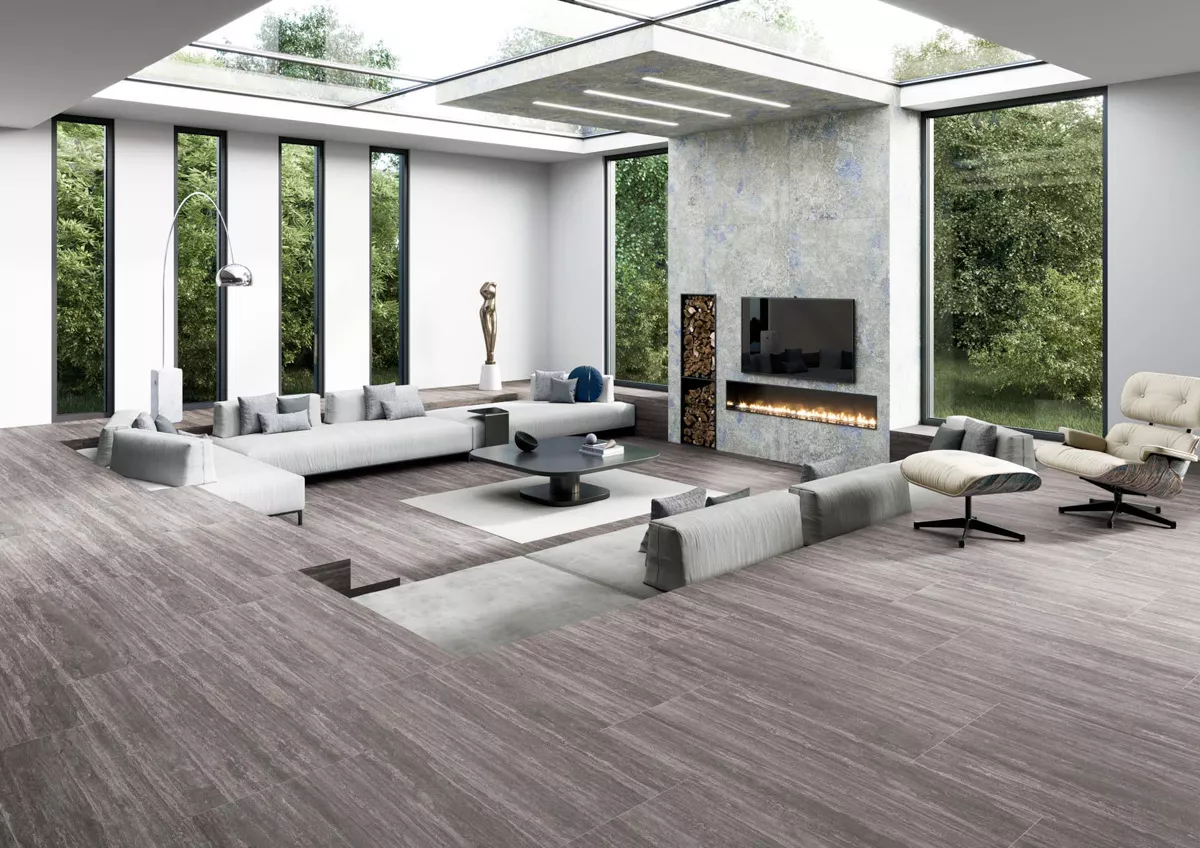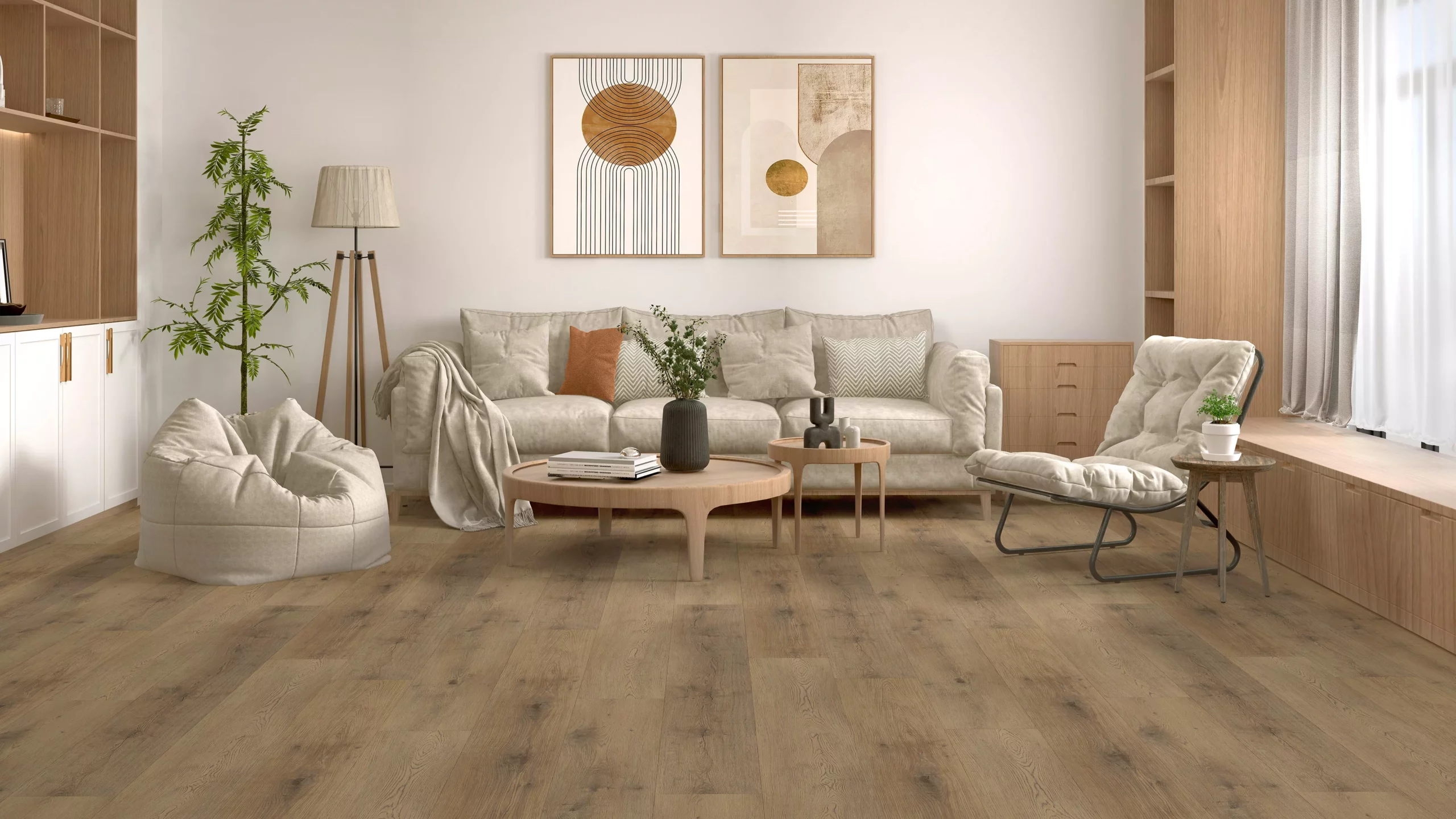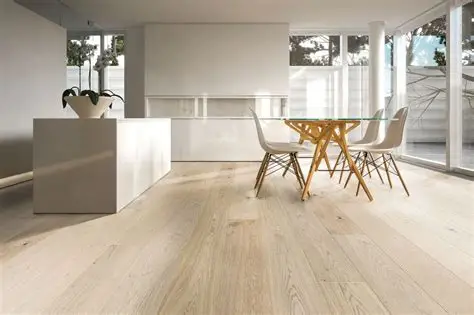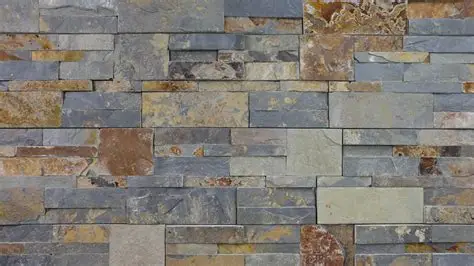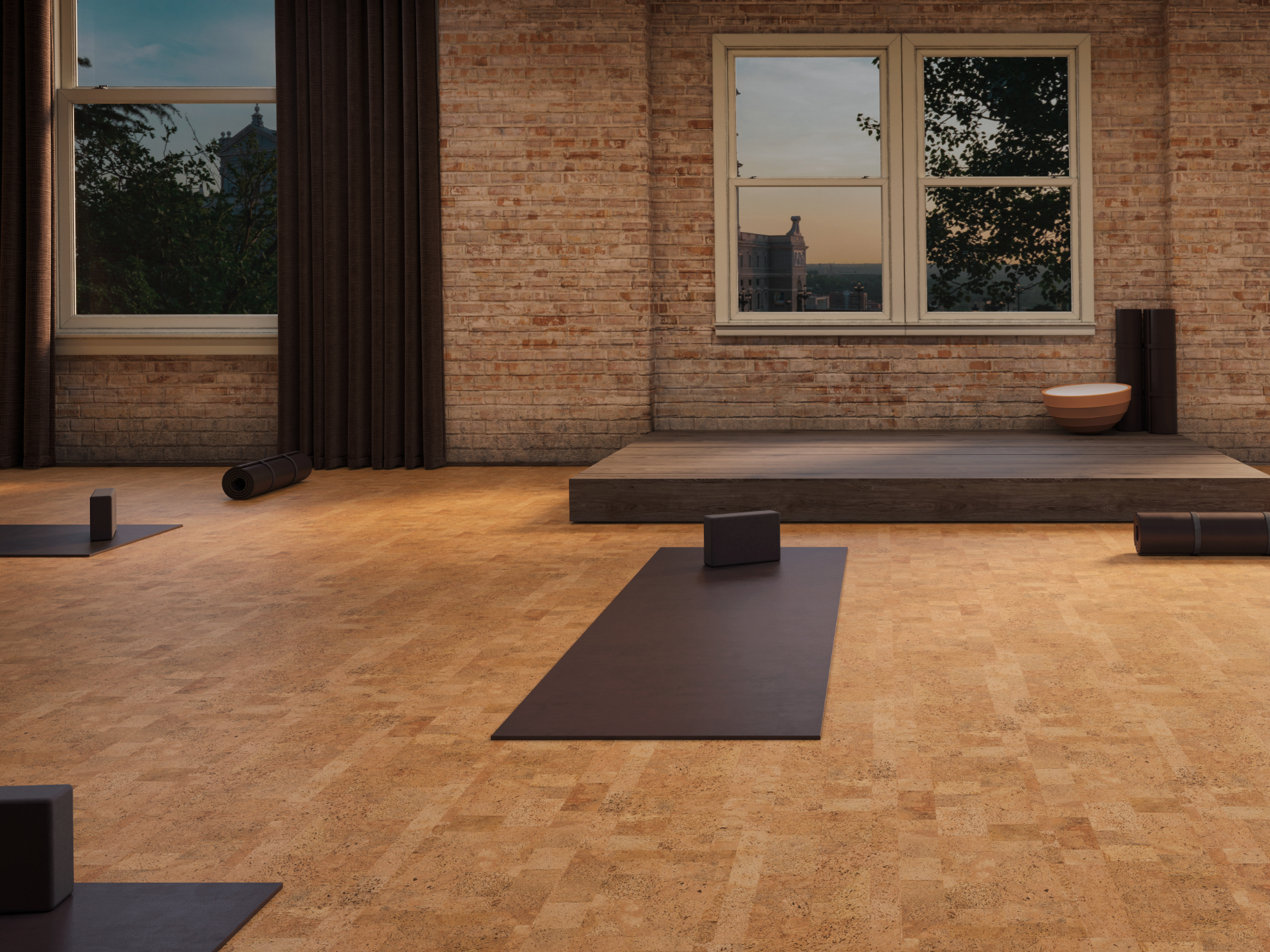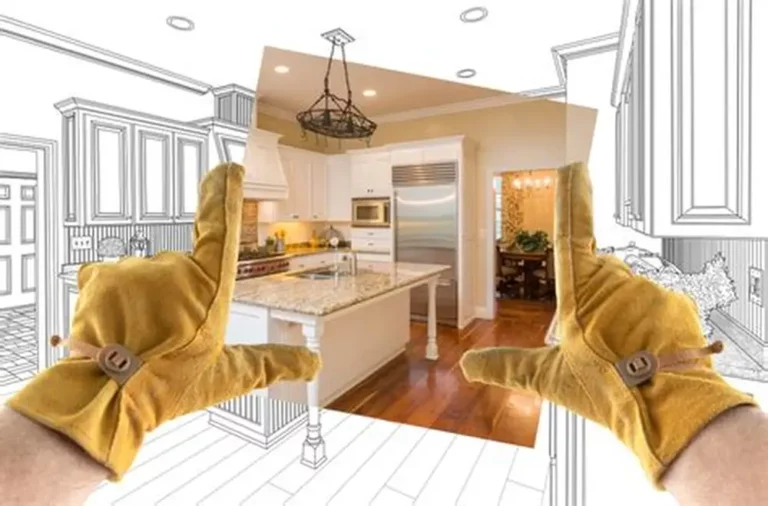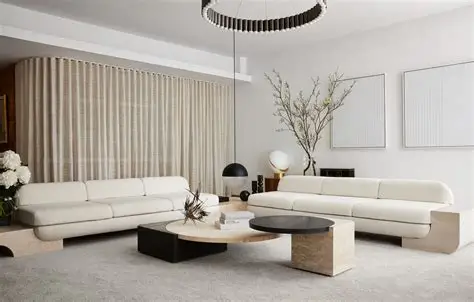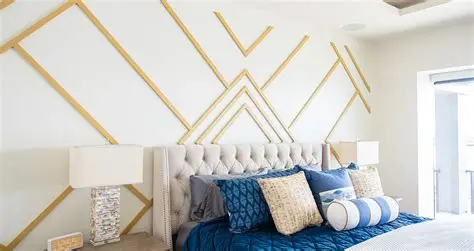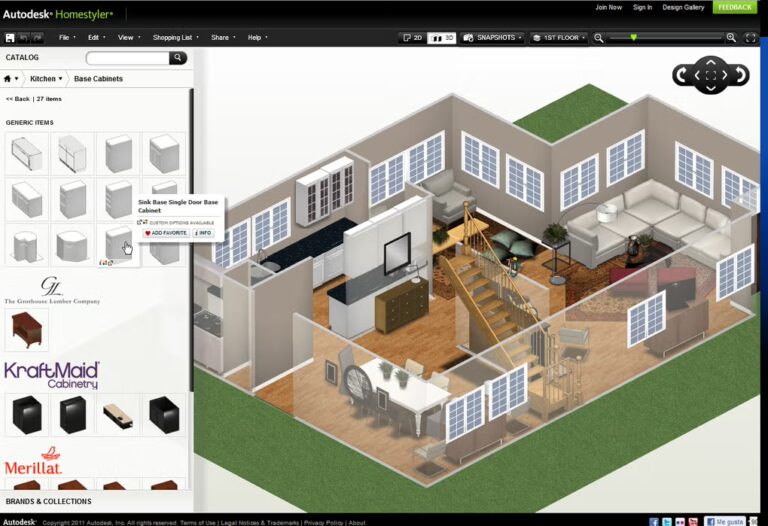Top Flooring Materials for Modern, Long-Lasting Homes
When you’re designing or renovating a home with longevity in mind, choosing the right flooring material is one of the most important decisions you’ll make. The flooring you select must deliver on aesthetics and durability, withstand wear and changing conditions, and complement a modern interior. In this article, you’ll learn the best flooring materials for modern, long-lasting homes, explore why they matter, and get detailed reviews of five real-world product options including what problems they solve, their benefits, and where to buy them.
Why flooring material matters in a modern long-lasting home
In a home designed to last, flooring does more than simply fill space underfoot. It must:
-
Withstand high traffic, moisture, spills, pets and children.
-
Maintain an aesthetic that is modern but timeless, not merely trendy.
-
Provide good value over time (reduce replacement/refurbishment cost).
-
Blend with modern technologies (for example under-floor heating, moisture-barriers, click-lock installation).
Modern homes often favour open floor-plans, seamless transitions between rooms, and materials that pair well with natural light, minimalist design, and durability. As many resources note, materials like porcelain tile, luxury vinyl plank (LVP), engineered hardwood, natural stone and newer composites are top choices for these demands.
In the following sections, we’ll dive into the top materials and then review specific products you can buy.
Porcelain & large-format tile
Porcelain tile is one of the standout choices when you want flooring that looks modern and lasts for decades. Because porcelain is manufactured from very fine clays fired at high temperatures, it gains high density, low porosity and excellent strength.
Detailed information & benefits:
-
Because of the low porosity and high strength, porcelain tiles resist water, stains, scratches and heavy foot-traffic. This makes them ideal for busy zones like kitchens, entryways and bathrooms.
-
Designs have evolved: you can now get large-format porcelain tiles (for example 120 × 60 cm or more) that reduce grout lines and deliver a seamless, modern look.
-
Their visual styles are versatile: you’ll find porcelain that mimics wood, stone or concrete giving you the aesthetic of natural materials but with much lower maintenance.
Use-case & problem solved:
If your home has a high-traffic foyer, or you live in a climate with frequent spills, or you want a flooring material that will still look as good 15-20 years from now, porcelain is a smart choice. Because it withstands moisture and wear, you don’t end up replacing flooring early. Also, the design flexibility means you won’t feel stuck with something outdated.
Why people need to use it:
-
For long-lasting durability in aggressive zones.
-
For a modern, clean aesthetic (large formats, minimal grout) that won’t feel old-fashioned.
-
For a material compatible with under-floor heating or large open areas.
Luxury Vinyl Plank (LVP) / Rigid-Core Vinyl
Luxury vinyl plank (LVP) or its rigid-core variant (often called SPC or WPC) has become a leading choice in modern homes because it combines realism of wood/stone aesthetics with the durability and practicality homeowners want.
Detailed information & benefits:
-
Many LVP products are labelled “100 % waterproof” or “water-resistant,” meaning they can be used even in basements, kitchens or bathrooms with minimal worry of damage from moisture.
-
They often offer scratch- and stain-resistance, easy installation (click systems), and lower cost compared to hardwood or natural stone.
-
Visually, the latest designs feature high-definition wood grains, stone look textures, and are available in wide plank formats that suit modern open-plan homes.
-
Because they are often floating floors, they can be installed over many types of sub-floors, reducing installation time and cost.
Use-case & problem solved:
If you need durable flooring throughout the whole home (living room, kitchen, bathroom, even laundry), while maintaining a cohesive wood-look aesthetic, LVP is a smart solution. It solves the problem of “I love the look of wood but worry about spills/pets/moisture.” Because of its ease, it also works well for renovation overlays (on top of existing flooring).
Why people need to use it:
-
For modern homes where durability, moisture-resistance and maintenance-ease are key.
-
For achieving a wood/stone aesthetic without the maintenance and cost burden of natural materials.
-
For households with pets, children or high foot-traffic where traditional hardwood might be risky.
Engineered Hardwood
While many modern homes opt for alternative materials, engineered hardwood remains a top pick when you want the authentic warmth and value of real wood but improved performance over solid hardwood.
Detailed information & benefits:
-
Engineered hardwood is constructed with a real wood veneer layer over a multi-layer substrate (plywood, HDF, etc). This core makes it more dimensionally stable (less prone to warping/shrinking) than solid hardwood.
-
It still provides the beauty, texture and value-added appeal of wood flooring, which can boost home resale value.
-
Many modern engineered hardwoods are pre-finished, come in wider plank formats, and coordinate better with under‐floor heating systems.
Use-case & problem solved:
Consider engineered hardwood if you want the natural look of wood in your living room, bedrooms or dining area, but you’re concerned about humidity or temperature changes in your climate. It solves the “wood look” need with better stability and less risk than solid hardwood.
Why people need to use it:
-
For upscale aesthetics with long-term value.
-
In homes where wood is desired but conditions might otherwise make solid wood risky (basements, wide temperature swings, open plan).
-
For a flooring that can be refinished (depending on veneer thickness) and thus last many years.
Natural Stone (Slate, Granite, Travertine)
Natural stone flooring exudes timeless appeal, strength and sophistication qualities that make it a go-to for long-lasting homes, especially in high-end or formal areas.
Detailed information & benefits:
-
Materials like slate, granite and travertine are highly durable, resist wear, fade and often outlive many other flooring types when properly installed and maintained.
-
They bring natural variation, texture and premium character to a space making each installation unique and offering high design value.
-
Some natural stone options are also suitable for outdoor or transition spaces (patios, entryways) if sealed correctly.
Use-case & problem solved:
If you’re designing a home that emphasizes premium finishes and long-term value, natural stone is ideal in entryways, formal living areas, and even high-end kitchens or bathrooms. It solves the problem of “furnishing a statement, premium, long-lasting floor.”
Why people need to use it:
-
For longevity and luxury combined.
-
For a flooring surface that holds value over decades.
-
For high-traffic areas where you want both durability and premium aesthetic.
Sustainable & Emerging Materials (Bamboo, Cork, Terrazzo)
Although less conventional in some regions, materials such as strand-woven bamboo, cork flooring and terrazzo are gaining traction in modern, long-lasting homes for their sustainability, performance and aesthetic flexibility.
Detailed information & benefits:
-
Bamboo: Especially strand-woven bamboo is harder than many hardwoods, giving excellent scratch and dent resistance. The fact that it’s a rapidly renewable resource helps appeal to eco-conscious homeowners.
-
Cork: Offers comfort underfoot, sound absorption, and sustainable harvest (bark harvest allows regrowth). Good for living rooms or bedrooms where comfort matters. Livingetc
-
Terrazzo: A composite of stone chips set in resin or cement, offering high durability, visual sophistication, and increasingly used in modern interiors looking for a unique finish.
Use-case & problem solved:
If your home carries an eco-friendly ethos or you want materials with less environmental impact or you’re designing a space where comfort, acoustic performance or unique aesthetic matter these materials offer alternatives to the “mainstream” choices. They solve the problem of wanting something both modern and sustainable/innovative.
Why people need to use it:
-
To align with environmental or health-conscious design goals.
-
For unique finishes that stand out but still deliver durability.
-
For spaces like bedrooms, playrooms, or feature zones where comfort and feel matter.
Five Real-World Product Recommendations
Below are five products you can buy today. Each includes detailed info, benefits, use-case, and purchase link.
1. Armstrong American Charm 6 Oak Vinyl Flooring
This is a vinyl plank floor from Armstrong’s “American Charm” line, with an oak-look finish. It offers the aesthetic warmth of wood but combines a vinyl construction for durability.
Detail & benefits:
-
Wood-look surface with realistic texture and colour variation.
-
Vinyl construction resists moisture, easy to clean and maintain.
Use-case:
Ideal for living rooms, kitchens and open-plan areas where you want wood aesthetics but need easier maintenance (especially if you have children/pets or moderate moisture).
2. Home Decoration Wooden Look SPC PVC Plastic Vinyl Flooring Plank
An SPC (Stone-Plastic Composite) rigid-core vinyl plank flooring designed for the modern home.
Detail & benefits:
-
SPC core means high stability, waterproof performance and suitability for high-traffic areas.
-
Wood-look finish gives modern aesthetic.
Use-case:
Perfect for areas like the entire ground floor, especially if you live in a humid climate, or have pets/kids and want a balance of style plus resilience.
3. Scandia Luxury Vinyl SPC Plank with 1 mm IXPE Rubber Pad
A luxury vinyl SPC plank that includes a pre-attached rubber pad (IXPE) for added underfoot comfort and sound reduction good for multi-level homes.
Detail & benefits:
-
SPC rigid core for durability and moisture resistance.
-
IXPE pad helps dampen sound and adds comfort – valuable in apartments, homes with upstairs/downstairs.
Use-case:
Ideal for second-floor rooms, playrooms or anywhere sound control and comfort underfoot are important.
4. Shaw Floors Vinyl Flooring Worlds Fair 6 MIL
A vinyl flooring option from Shaw Floors, labelled “Worlds Fair” with a 6 MIL wear layer. This is more budget oriented yet from a known brand.
Detail & benefits:
-
Recognised brand (Shaw Floors) for quality assurance.
-
Vinyl construction means easy maintenance, good for rental properties, busy households, or cost-conscious renovations.
Use-case:
Best for budget-minded long-lasting flooring needs, such as rental property, guest rooms or secondary spaces where durability still matters but budget is tighter.
5. (Honourable mention) Natural Stone Tile – though not a specific product listed here, consider browsing local stone tile suppliers (e.g., granite/slate/travertine) in Indonesia or import options.
Detail & benefits:
Natural stone offers premium feel, long lifespan, and is appropriate for homes built to last.
Use-case:
Ideal for main living areas, high-impact zones (entryway, formal hall), or homes where high value and durability are key.
How to Buy – Smart Tips & Where to Buy
When purchasing flooring for a modern, long-lasting home, you’ll want to consider these steps:
-
Measure and select zones logically.
-
Determine the rooms/areas: living room, kitchen, bathrooms, bedrooms, hallways.
-
Choose a flooring material suited to the specific demands of each zone (moisture, traffic, pets).
-
-
Check product specifications and suitability.
-
For vinyl: wear layer thickness, waterproof rating, click-lock vs glue.
-
For tile: tile size, slip-resistance, substrate preparation, grout options.
-
For engineered hardwood: veneer thickness, stability, compatibility with your climate.
-
-
Match the aesthetic and finish.
-
For a modern home: wide planks, minimal grout lines, matte finishes rather than high-gloss. Note: matte finishes are trending for modern homes because they are more forgiving and less reflective.
-
Choose neutral or warm tones that will age well.
-
-
Consider installation and under-floor preparation.
-
A proper sub-floor is essential for durability. Uneven or damp sub-floors can shorten lifespan.
-
For humid or tropical climates (such as Indonesia), ensure moisture barrier or appropriate acclimatisation for wood/engineered floors.
-
-
Buy from reliable suppliers and check warranties.
-
For imported products, verify shipping, customs, delivery and local support.
-
Look for brand reputation, warranty terms, and after-sales service.
-
-
Where to purchase (for Indonesia & beyond):
-
International e-commerce sites (eBay, Alibaba/Made-in-China) for vinyl and SPC products listed above.
-
Local flooring showrooms / tile importers for natural stone or engineered hardwood.
-
Brand name retailers that ship to Indonesia or partner with local distributors.
-
-
Installation & Aftercare.
-
Proper installation by qualified installers ensures long life.
-
Ongoing maintenance: sweeping, mopping with correct cleaners, sealing (for stone), and avoiding harsh chemicals or high heel damage.
-
FAQ
Q1: Which flooring material is best if I have pets, children and high traffic?
A1: In that scenario, a material like LVP (luxury vinyl plank) or SPC vinyl is highly recommended because it offers waterproofing, scratch/stain resistance, and easy maintenance. Porcelain tile is another excellent option for high-traffic and wet areas.
Q2: Can I use the same flooring material throughout the entire home (living room, kitchen, bathroom, bedrooms)?
A2: Yes, you can but you must ensure the chosen material suits all zones. For example, a waterproof vinyl plank or tile can be used throughout. If you choose a wood-look engineered hardwood, ensure it handles bathroom/kitchen moisture or consider switching materials in wet zones for durability.
Q3: How long can I expect these flooring materials to last?
A3: Lifespan depends on quality, installation and maintenance. Porcelain tile and natural stone can last 20-50 years or more with proper care. High-quality vinyl/plank floors may last 15-25 years (or longer if well maintained). Engineered hardwood can last decades, especially if refinishing is an option. Proper installation and care make all the difference.

